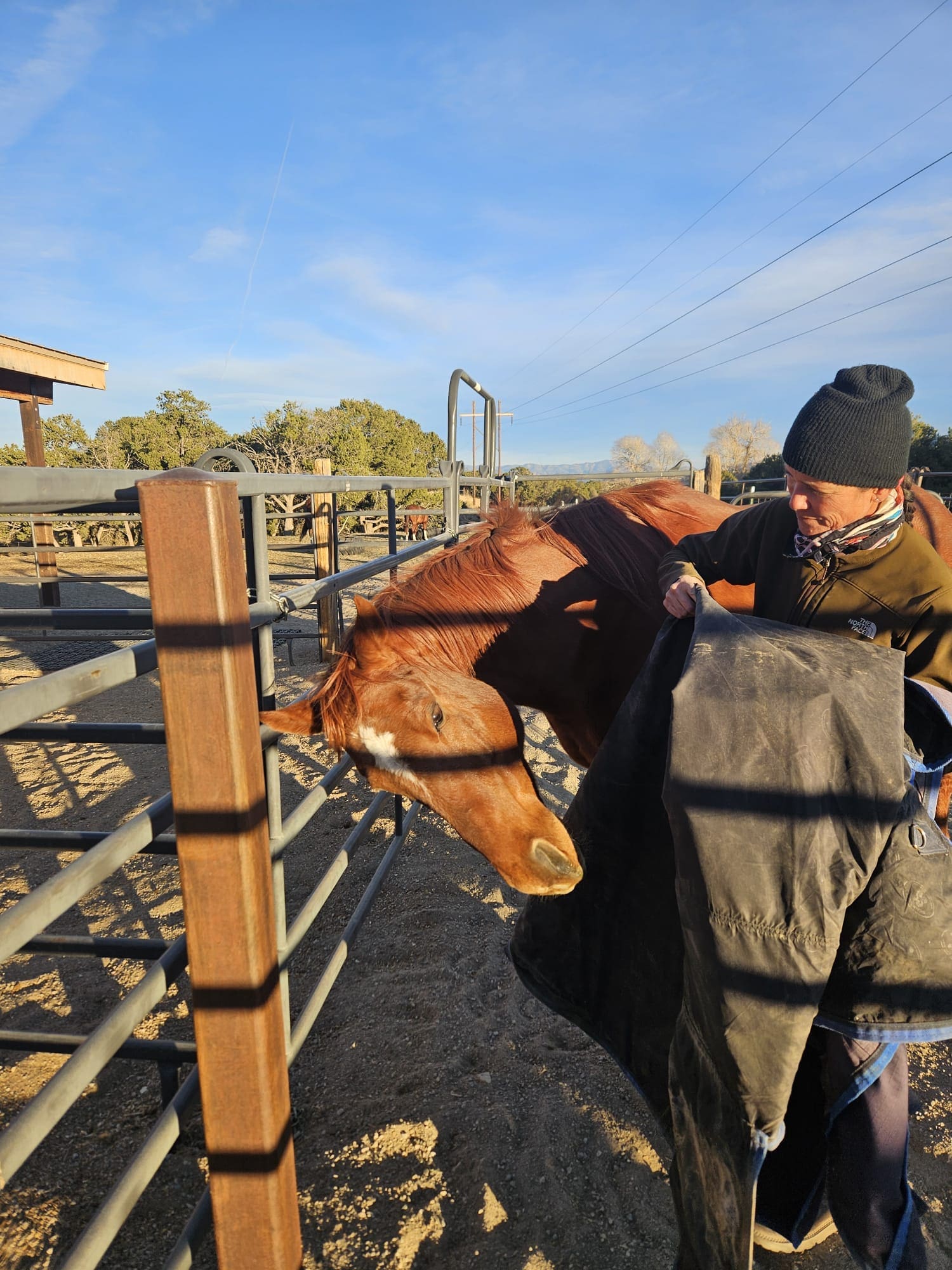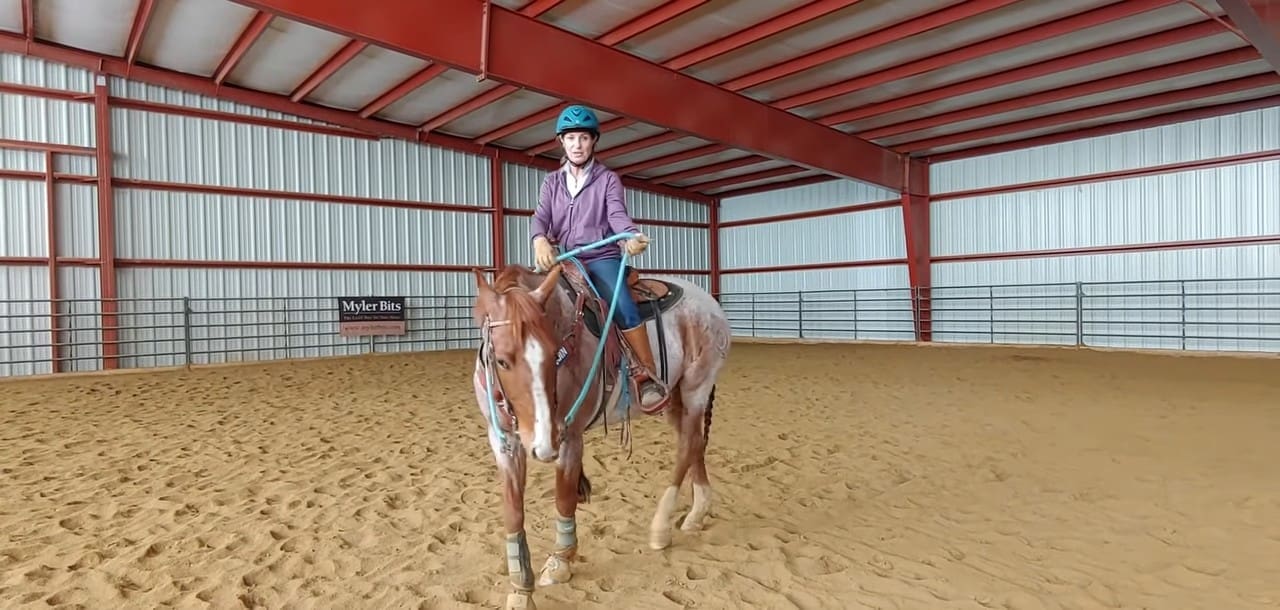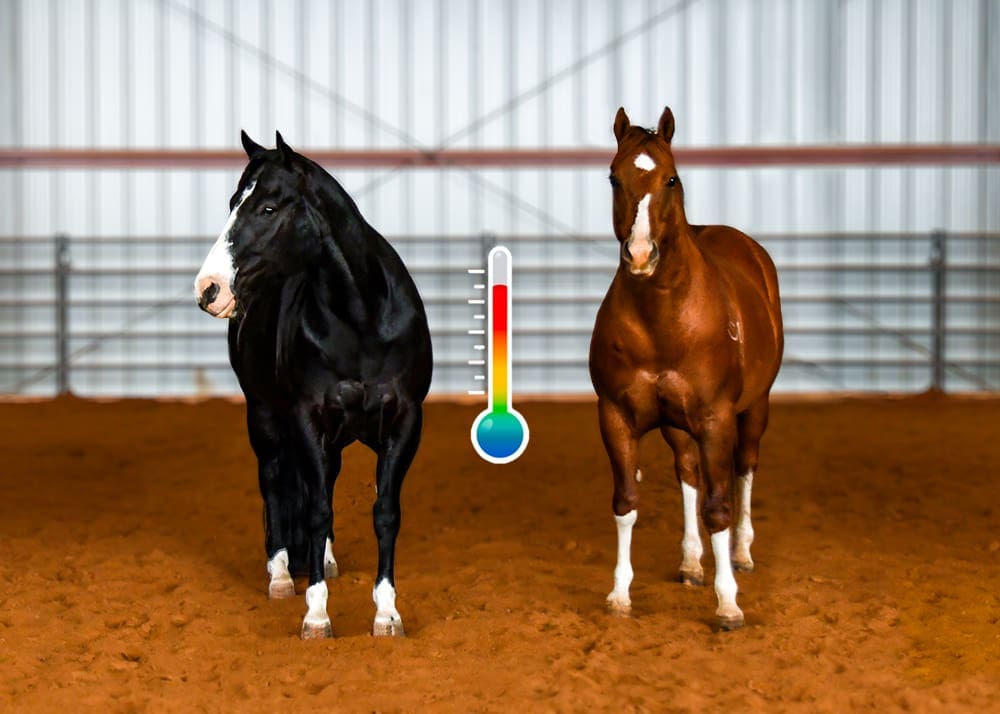
Horses are unique individuals with differing temperaments and a variety of idiosyncrasies. Even within one breed or type of horse, temperament can vary greatly between individuals. The more you know and understand about your horse’s temperament, the easier he will be to train, the better you will communicate, and the stronger the bond you will have with the horse.
It’s not always easy to know and understand your horse’s temperament– to discern its true nature from its life experiences and what he has learned. It’s the age-old argument of nature vs. nurture and instinctive vs. learned behavior. Since horses are lightning-quick learners, from the moment they are born, it can be hard to discern an instinctive reaction from a cleverly learned trick.
Horses are born with their temperament, and you cannot change it (nature). Training (nurture) will teach the horse to contain its behavior and emotionality, and give the horse skills for coping, but it will not change the horse’s underlying temperament.
Let’s say you have a horse with a quick temper, or maybe it’s a horse that’s quite spooky; with consistent handling and training, the horse’s habitual behavior can become quite the opposite. Sadly, the reverse is also true—if you constantly fight with a quick-tempered horse or give that spooky horse more reason to be afraid (by punishing fear) you may engrain those temperament traits indelibly.
Temperament should not be scored as good or bad or right or wrong. It is what it is and the very qualities that make one horse undesirable for a certain rider, may make him highly desirable in another rider. A high-level Olympic show jumper is not going to be a good fit for a person in their 60s just learning to ride. What’s important is that the horse’s temperament is suitable for the rider’s temperament, skill level, and intended use.
We intentionally refrain from using the term “personality” when talking about horses. Since the human brain is more evolved than the equine brain, human personality traits don’t apply. As you think about horse behavior, try not to anthropomorphize (instill human-like characteristics) and be objective and nonjudgmental as you consider the characteristics of your horse.
Somewhere on the Spectrum
If your experience with horses is limited to one or two individuals, it’s hard to have a broader perspective on the different aspects of equine temperament. After working with literally thousands of different horses over my career, I’ve learned to focus on certain aspects of temperament to evaluate a horse I am getting to know. The more I understand what motivates the horse—how reactive he is, how quickly he learns, how eager he is to please—the better I can train the horse.
Before you begin to assess any horse’s temperament, you need to be aware of two things:
- Behavior should never have judgment attached to it.
- A temperament trait that is appealing to one type of rider can also be undesirable to another.
Because of these two factors, there are no high or low scores or right or wrong answers in this evaluation. It’s hard to be exact when evaluating temperament, because training (for better or for worse), life experiences and age can disguise a horse’s true temperament.
As you consider the characteristics of temperament that I have listed below, think about where your horse fits on the spectrum of behavior. Think about your interactions with the horse, how he responds to your cues, how he acts in new situations, and take the time to observe your horse’s behavior in a herd setting, where he interacts with other horses.
HandsOn Gloves $29.99 *$24.99*
Make grooming time a bonding time with your horse
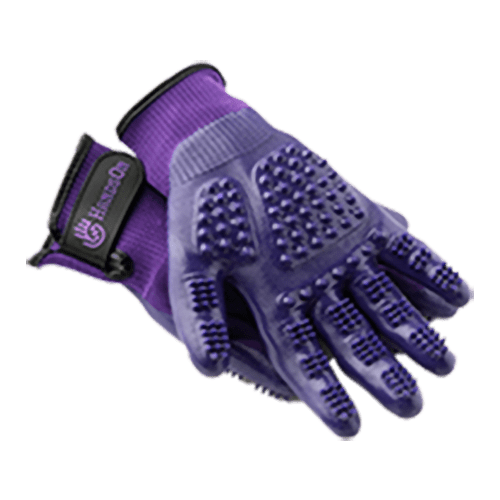
Characteristic #1: Sensitivity Level
One of the greatest variances we see in horses is in their sensitivity level. While all horses are incredibly sensitive to pressure of all kinds, we see a huge range in sensitivity from “hot-blooded” to “cold-blooded.”
Hot-blooded means the horse is highly sensitive and reactive to all forms of pressure—physical, mental, environmental, emotional. A cold-blooded horse is not. Higher-level riders love a sensitive horse that reacts to a rider’s thoughts and invisible cues. On the other hand, an inexperienced rider’s inconsistencies and mistakes may be intolerable to a highly sensitive horse and rapidly send him into a tailspin.
Keep in mind that while we think of some breeds of horses as hot- or cold-blooded, these are just generalities, and do not apply to every individual. The most hot-blooded breeds will have cold-blooded individuals, and visa-versa.
Evaluate Your Horse’s Sensitivity Level: Think about how reactive your horse is to sounds, movements, leg and rein pressure, changes in the rider’s balance, touching, brushing, etc. Remember that both low and high sensitivity can be an advantage to a certain type of rider—so there’s no right or wrong. On a scale of 1-10, where 1 is insensitive/unreactive and 10 is highly sensitive/over-reactive, most horses are probably going to fall somewhere in the middle. Where would you put your horse?
Characteristic #2: Forward Energy
People like to say there are two kinds of horses—ones with too much go, and ones with too much whoa. Energy and activity levels vary a lot between individual horses. For some horses, movement is the solution to every problem and the answer to every question. Other horses prefer to conserve all of their energy in case it’s needed for flight.
Of course, training level and daily workload can impact a horse’s energy level, but some horses are by nature quite slow and reluctant to move forward. (But God love the lazy horses, without whom none of us would’ve learned to ride!)
Evaluate Your Horse’s Energy Level: This time, on a scale of 1-10, 1 is the horse that you could light firecrackers under its tail and he might not move, and 10 is the horse that you just think “go” and it’s in the next county.
For the average rider, a horse in the mid-range is ideal. For the beginners, we need more whoa. For high-performance endeavors, horses with a lot of go are just right. Where does your horse land?
Characteristic #3: Vigilance
Vigilant horses are highly aware, and can be busy-minded and easily distracted. Vigilance is a common trait in prey animals that rely on flight as their #1 defense. Hyper-vigilant horses notice the smallest changes in their known environment. They tend to be easily distracted by other horses and their comings and goings, and they keep track of everything happening around them. A high level of vigilance combined with a high fear level can make for a spooky horse. A high level of vigilance combined with calmness and confidence, on the other hand, can be ideal for some riders, and is likely an alpha horse by nature.
Because horses can be highly reactive to new or unexpected stimuli (like a plastic bag blowing across the trail), a horse with less life experience—that has not been exposed to new places and different situations—may overreact to change. A horse that has “been there, done that,” and seen a lot of things can seem less vigilant—but really, he has just become accustomed to change.
Evaluate your horse’s vigilance: Think about how present and focused your horse is. This time, 1 means your horse is 100% focused on you and the task at hand, unbothered by anything else that’s going on. When you’re not asking anything of him, he’s content to zone out and focus on nothing (a horse’s “happy” place). A 10 means he wants to look around at everything (but remember, if he’s a confident horse, he isn’t necessarily spooking at everything). He keeps track of other horses coming and going, the arena gate shutting, a barn cat playing in the distance, a leaf blowing across his path. Keeping all of that in mind, how vigilant is your horse?
Characteristic #4: Herd Hierarchy
The horse herd has a clear hierarchy, or chain of authority. It is linear, with one horse at the top of the pecking order (the alpha), then going down the line to the horse at the very bottom (the omega). It is not always easy to know if your horse’s natural tendency is to be at the top, middle, or bottom when they are put into forced herds. Even in a pen full of very submissive horses, one will rise to the top and a hierarchy will exist.
Horses that are alpha by nature tend to be brave and bold, with a high level of awareness and a strong sense of right and wrong. They are not bullies, but can be assertive when laying down the law in the herd. Omega horses tend to be leery, keep away from the fray, get picked on by others, and won’t fight for their food. Many herds have a horse fondly known as the “uncle” horse, who gets along with all the other horses and will stand up to bullies.
Both alphas and omegas have their pros and cons. What is most important is that the horse’s temperament is a suitable match for the rider. For instance, a dominant horse would not be a good match for a very passive, easily intimidated person.
Evaluate where your horse is in his herd’s hierarchy: You can think of a 1 as an omega and 10 as an alpha—with many positions in between. Observe how your horse interacts in the herd, it will tell you a lot about his dominance or submissiveness. If horses are fed in a group, the more dominant horses always eat first. Dominant horses control the space and actions of the submissive horses. What number do you think your horse is?
Characteristic #5: Willingness
Because horses are animals that always seek acceptance into the herd, and because we have bred horses to be tractable over hundreds of generations, some horses are super-eager to please. Others, not so much.
In my experience, sometimes super-willing horses are entirely misunderstood, because they will fall apart emotionally and shut down easily when over-criticized or confused. On one end of the spectrum, I think of an Eagle Scout—the horse that’s always there for you, steady and reliable, eager to please, hardworking, and never questioning my decisions as the troop leader. The other end, however, is not a horse that works against you, but maybe a horse that is indifferent to praise, looks for ways to detach, looks away and acts as if you don’t exist.
In reality, most horses are indifferent to people. Don’t take it personally that they prefer horses over people. Horses are not overtly affectionate animals—if affection, loyalty, and devotion is what you need, get a Golden Retriever. The naturally willing and eager-to-please horse may be more of the exception than the rule, and this trait can be highly affected by training too. Still, super willing horses exist, and they can get their feelings hurt easily.
Evaluate your horse’s willingness: Knowing that training can highly affect this trait, consider how hard your horse tries when you ask him to do something new or different. Does the horse work at finding the right answer? Does he get upset or nervous when confused, and thrive on praise? Does he follow rules well and try hard when you ask? Or, does your horse challenge your decisions, take advantage of opportunities, or act like you don’t exist at times? Where would your horse score if 1 is the most indifferent or contrary to your decisions, and 10 is the most willing? (Obviously, this is one trait where we’d love to score all horses highly. Consider it a big bonus if your horse is exceptional in this characteristic!)
Characteristic #6: Bravery
It’s tempting to think that a brave, bold horse is always better than a horse that’s scared of his own shadow, but that’s not actually true. Some horses hit the ground thinking the world is their oyster, and that adventures lay ahead.
You might think that bravery seems like a particularly useful trait when you are riding atop a 1000-lb. animal which is prone to flight—and you’d be right. But horses that are low on fear, bold and brave also tend to be dominant, confident, willful, and will do best with riders cut from the same cloth. Horses that are more average on the fear/courage scale are more reliant on their human and because of that, may be more willing.
Evaluate your horse’s bravery: Let’s go back to the 1 to 10 scale with 10 being the horse that rarely, if ever, spooks and seems to be afraid of nothing. He likes being out in front on the trail, is not easily intimidated by other horses or people, and may get angry or lash out if treated harshly. Score 1 if the horse is nervous all the time, doesn’t handle new situations well, and spooks or startles regularly. Somewhere in the middle is just fine!
Characteristic #7: Curiosity
While some horses seem brave because they are confident and dominant, others seem brave strictly because of their high curiosity level. These horses tend to learn clever tricks like untying the lead rope or opening the gate. This is called “investigative behavior,” one of seven categories of instinctive behaviors in horses, and it is the opposite of flight (another category). Horses tend to be either high on flight and low on curiosity, or low on flight and high on curiosity. For the most part, curiosity is a great trait in a horse (few people hope their horses have a high fear quotient).
Evaluate your horse’s curiosity: To evaluate your horse’s curiosity, think about how it reacts to a novel stimulus—something it’s never seen before. How quickly is the horse able to go from flight (or thinking about flight) to forward investigation? How willing is he to approach a new thing? A 10 is the horse that, when startled, keeps thinking and responding. That horse that is a 1 spins and bolts. (If your horse scores low on fear and high on curiosity, it’s definitely a bonus—but again, it’s not the norm.)
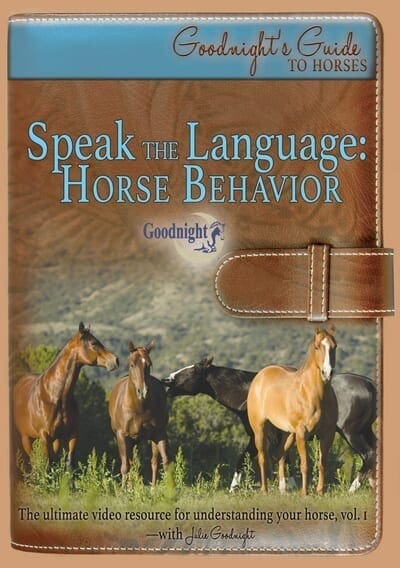
Speak the Language: Horse Behavior
The Ultimate Resource for Understanding your Horse
Learn the unique characteristics of a horse’s natural behavior so you are safer, more effective and can better relate to the needs of your horse.
Characteristic #8: Emotionality
Horses can be quite emotional, and they experience the same primary emotions as humans–sadness, happiness, anger, fear, surprise, and disgust. Their emotions are expressed with postures, facial expressions, body language, and audible communications.
Emotion, in its most general scientific definition is “a neural impulse that moves an organism to action, prompting automatic reactive behavior that has been adapted through evolution as a survival mechanism to meet a survival need.”
The individual temperament of any horse might range from emotionally steady, unflappable, and stoic, to a horse that often loses its ability to think, easily becomes emotional, is exuberant at times or may shut down easily (become unresponsive). While some individuals are calm and steady emotionally, and others are a big mess in this department—all horses can learn to control their emotionality and behavior through training.
Evaluate your horse’s emotionality: To evaluate the relative emotionality of your horse, think about how it behaves around new horses or in new environments. What is his anxiety level when leaving the herd or facing a scary object? Is your horse prone to temper tantrums or other emotional meltdowns? If 1 is completely calm at all times, and 10 is coming unglued at the drop of a hat, where would your horse land? (If anyone has ever referred to your horse as Steady Eddie, lucky you!)
Characteristic #9: Independence
Because horses are instinctively gregarious, or drawn to the herd, they are not always confident when separated from other horses. Once again, horses can learn to trust their human companion enough to leave the safety of the herd behind, but few horses are this way naturally.
Horses can be notoriously indifferent to humans, and they find comfort and safety with the herd, but a few horses will show more independence—particularly younger horses. It’s not common, but some horses seek out human company, willingly walking away from the herd like they are getting special treatment or going on a new adventure. Other independent horses may not be as interested in people, but are always looking forward to the next big adventure—approaching the trail or a new situation with gusto.
Some horses ride out fine alone, and seem to pay no attention when all the other horses leave. However, many, if not most horses, can have complete meltdowns when separated or left behind. In general, younger horses are less herd-bound and middle-aged horses are the worst—but even amongst a bunch of younger horses, most of them will be very dependent on, and drawn to, the herd.
Evaluate your horse’s independence: You probably don’t have to think too much about this temperament trait in your horse, so on a scale of 1-10, I’m sure you already know. Although independence and an interest in being with humans are great qualities, it’s certainly the exception and not the rule. So, score more bonus points if your horse is independent!
Those are the big temperament categories that I consider whenever I am getting to know a new horse. Evaluating your horse’s temperament is an academic exercise, since we can’t really know for sure where nature ends and where learned behavior begins. There’s nothing we can do to change a horse’s temperament either.
However, horses are such fast learners, and they adapt so well to our expectations of their behavior—when they have consistent handling and fair treatment. I know many young horses with challenging temperaments that turned out to be awesome horses (Seabiscuit is one of my favorite books about a horse like this). Most temperament traits can be strengthened with training. Even the seemingly negative traits can often be channeled in a positive direction—with good training.
Still, it’s good to have a deeper understanding of your horse’s natural temperament. It will inform the training methods you use and shape your expectations. Most importantly, it will help you forge a deeper bond with your horse—the kind that comes from empathy and acceptance.
HandsOn Gloves $29.99 *$24.99*
Make grooming time a bonding time with your horse

